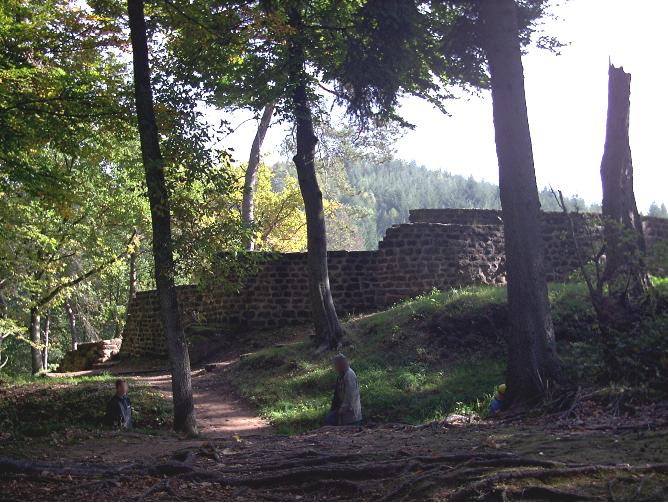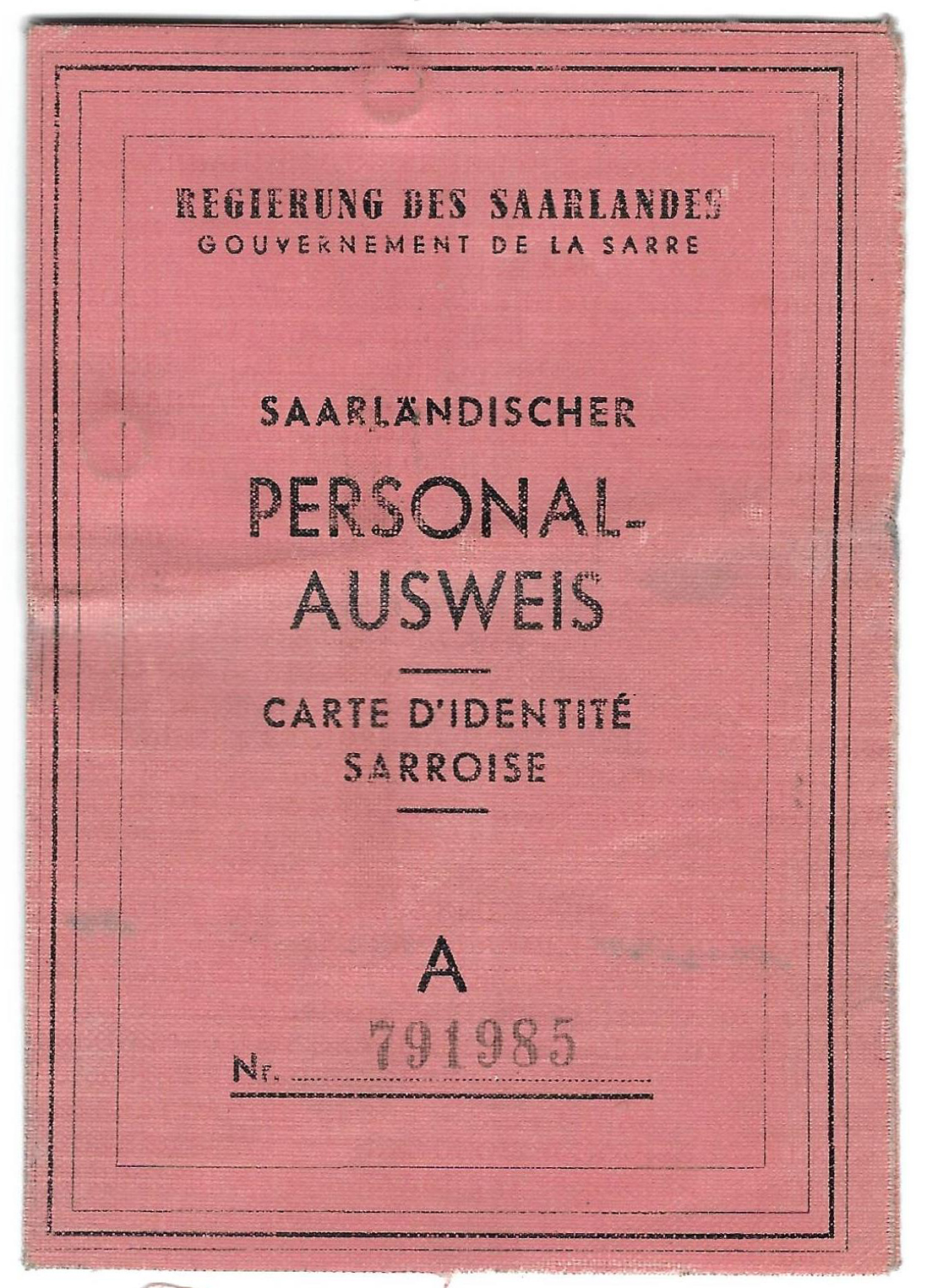|
Kirrberg (Saar)
Kirrberg (in dialect ''Kerrbrich'') is a district of Homburg, situated in the eastern part of the Saarpfalz (Saar-Palatinate) district and the Saarland bordering state Rhineland-Palatinate. Until End 1973 was Kirrberg an independent municipality in the former Homburg district. Homburg (5 km), Zweibrücken (7 km), Saarbrücken and Kaiserslautern (both 35 km) are the closest towns. As of 1 August 2021, 2,607 inhabitants live in Kirrberg. The river Lambsbach runs through the district from east to west. History The chapel of Kirrberg was first mentioned in the year 1290 as ''"Capella in Kirchperch"''. On 23 April 1949 Kirrberg was affiliated with the Bundesland Saarland Saarland (, ; ) is a state of Germany in the southwest of the country. With an area of and population of 990,509 in 2018, it is the smallest German state in area apart from the city-states of Berlin, Bremen, and Hamburg, and the smallest in ... and because of that it is the youngest village ... [...More Info...] [...Related Items...] OR: [Wikipedia] [Google] [Baidu] [Amazon] |
Homburg (Saar)
Homburg (; , ; ) is a town in Saarland, Germany and the administrative seat of the Saarpfalz-Kreis, Saarpfalz district. With a population of 43,029 inhabitants (2022), it is the third largest town in the state. The city offers over 30,000 workplaces. The medical department of the Saarland University, University of Saarland is situated here. The city is also home to the Karlsberg (brewery), Karlsberg beer brewery. Major employers include Robert Bosch GmbH, Schaeffler Group and Michelin. Geography Homburg is located in the northern part of the Saarpfalz-Kreis, Saarpfalz district, bordering Rhineland-Palatinate. It is 16 km from Neunkirchen, Saarland, Neunkirchen and 36 km from Saarbrücken. The city districts are situated in the Blies valley or on its tributaries Erbach (Blies), Erbach, Lambsbach and Schwarzbach (Blies), Schwarzbach. Homburg is composed of Homburg center and nine city districts: Beeden, Bruchhof-Sanddorf, Einöd, Erbach (Homburg), Erbach, Jägersburg, K ... [...More Info...] [...Related Items...] OR: [Wikipedia] [Google] [Baidu] [Amazon] |
Saarpfalz-Kreis
Saarpfalz (''Saar-Palatinate'') is a Kreis (district) in the south-east of the Saarland, Germany. Neighboring districts are (from west clockwise) Saarbrücken, Neunkirchen, Kusel, Kaiserslautern, Südwestpfalz, district-free Zweibrücken, and the French ''département'' Moselle in Lorraine. History After the Treaty of Versailles, the Saar basin was placed under the administration of the League of Nations for 15 years. The Palatinate area, then part of Bavaria, was therefore split in two parts. The part which went into the Saar became commonly known as Saarpfalz, and was administered by the two ''Bezirksamt'' St. Ingbert and Homburg. The Saarpfalz district was created in 1974 when the St. Ingbert and Homburg districts were merged. Since 1997 the district has had a partnership with Henrico County, Virginia. Coat of arms The lion in the top left is the symbol of the Palatinate (Pfalz), the cross in the top right is the symbol of Trier, both owned a large part of the district in ... [...More Info...] [...Related Items...] OR: [Wikipedia] [Google] [Baidu] [Amazon] |
Saarland
Saarland (, ; ) is a state of Germany in the southwest of the country. With an area of and population of 990,509 in 2018, it is the smallest German state in area apart from the city-states of Berlin, Bremen, and Hamburg, and the smallest in population apart from Bremen. Saarbrücken is the state capital and largest city; other cities include Neunkirchen and Saarlouis. Saarland is mainly surrounded by the department of Moselle (Grand Est) in France to the west and south and the neighboring state of Rhineland-Palatinate in Germany to the north and east; it also shares a small border about long with the canton of Remich in Luxembourg to the northwest. Having long been a relatively small part of the long-contested territories along the Franco-German linguistic border, Saarland first gained specific economic and strategic importance in the nineteenth century due to the wealth of its coal deposits and the heavy industrialization that grew as a result. Saarland was first est ... [...More Info...] [...Related Items...] OR: [Wikipedia] [Google] [Baidu] [Amazon] |
Rhineland-Palatinate
Rhineland-Palatinate ( , ; ; ; ) is a western state of Germany. It covers and has about 4.05 million residents. It is the ninth largest and sixth most populous of the sixteen states. Mainz is the capital and largest city. Other cities are Ludwigshafen am Rhein, Koblenz, Trier, Kaiserslautern, Worms, and Neuwied. It is bordered by North Rhine-Westphalia, Saarland, Baden-Württemberg and Hesse and by France, Luxembourg and Belgium. Rhineland-Palatinate was established in 1946 after World War II, from parts of the former states of Prussia (part of its Rhineland and Nassau provinces), Hesse ( Rhenish Hesse) and Bavaria (its former outlying Palatinate kreis or district), by the French military administration in Allied-occupied Germany. Rhineland-Palatinate became part of the Federal Republic of Germany in 1949 and shared the country's only border with the Saar Protectorate until the latter was returned to German control in 1957. Rhineland-Palatinate's natural and c ... [...More Info...] [...Related Items...] OR: [Wikipedia] [Google] [Baidu] [Amazon] |
Zweibrücken
Zweibrücken (; ; , ; literally translated as "Two Bridges") is a town in Rhineland-Palatinate, Germany, on the Schwarzbach (Blies), Schwarzbach River. Name The name ''Zweibrücken'' means 'two bridges'; older forms of the name include Middle High German ''Zweinbrücken'', Latin ''Geminus Pons'' and ''Bipontum'', and French language, French ''Deux-Ponts'', all with the same meaning. History The town was the capital of the former Imperial State of Palatine Zweibrücken owned by the House of Wittelsbach. The ducal castle is now occupied by the high court of the Palatinate (''Oberlandesgericht''). There is a fine Gothic architecture, Gothic Protestant church, Alexander's church, founded in 1493 and rebuilt in 1955. From the end of the 12th century, Zweibrücken was the seat of the County of Zweibrücken, the counts being descended from Henry I, youngest son of Simon I, Count of Saarbrücken (d. 1182). The line became extinct on the death of Count Eberhard II (1394), who in 13 ... [...More Info...] [...Related Items...] OR: [Wikipedia] [Google] [Baidu] [Amazon] |
Saarbrücken
Saarbrücken (; Rhenish Franconian: ''Sabrigge'' ; ; ; ; ) is the capital and largest List of cities and towns in Germany, city of the state of Saarland, Germany. Saarbrücken has 181,959 inhabitants and is Saarland's administrative, commercial and cultural centre. It is located on the Saar River (a tributary of the Moselle), directly borders the French department of Moselle (department), Moselle, and is Germany's second-westernmost state capital after Düsseldorf. The modern city of Saarbrücken was created in 1909 by the merger of the three cities of Saarbrücken (now called ''Alt-Saarbrücken''), Sankt Johann (Saarbrücken), St. Johann a. d. Saar, and Malstatt-Burbach. It was the industrial and transport centre of the Saar coal basin. Products included iron and steel, sugar, beer, pottery, optical instruments, machinery, and construction materials. Historic landmarks in the city include the stone bridge across the Saar (river), Saar (1546), the Gothic church of St. Ar ... [...More Info...] [...Related Items...] OR: [Wikipedia] [Google] [Baidu] [Amazon] |
Kaiserslautern
Kaiserslautern (; ) is a town in southwest Germany, located in the state of Rhineland-Palatinate at the edge of the Palatinate Forest. The historic centre dates to the 9th century. It is from Paris, from Frankfurt am Main, 666 kilometers (414 miles) from Berlin, and from Luxembourg. Kaiserslautern is home to about 100,000 people. Additionally, approximately 45,000 NATO military personnel are based in the city and its surrounding district ('' Landkreis Kaiserslautern''). History and demographics Prehistoric settlement in the area of what is now Kaiserslautern has been traced to at least 800 BC. Some 2,500-year-old Celtic tombs were uncovered at Miesau, a town about west of Kaiserslautern. The recovered relics are now in the Museum for Palatinate History at Speyer. Medieval period Kaiserslautern received its name from the favourite hunting retreat of Holy Roman Emperor Frederick Barbarossa who ruled the Holy Roman Empire from 1155 until 1190. The small river Lauter made t ... [...More Info...] [...Related Items...] OR: [Wikipedia] [Google] [Baidu] [Amazon] |
Geography Of Saarland
Geography (from Ancient Greek ; combining 'Earth' and 'write', literally 'Earth writing') is the study of the lands, features, inhabitants, and phenomena of Earth. Geography is an all-encompassing discipline that seeks an understanding of Earth and its human and natural complexities—not merely where objects are, but also how they have changed and come to be. While geography is specific to Earth, many concepts can be applied more broadly to other celestial bodies in the field of planetary science. Geography has been called "a bridge between natural science and social science disciplines." Origins of many of the concepts in geography can be traced to Greek Eratosthenes of Cyrene, who may have coined the term "geographia" (). The first recorded use of the word γεωγραφία was as the title of a book by Greek scholar Claudius Ptolemy (100 – 170 AD). This work created the so-called "Ptolemaic tradition" of geography, which included "Ptolemaic cartographic theory." ... [...More Info...] [...Related Items...] OR: [Wikipedia] [Google] [Baidu] [Amazon] |





